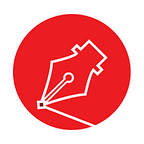Preparing files for laser cutting
From coasters to clocks and even paper art — laser cutting and engraving are both extremely popular choices for those looking to create complex patterns in materials such as wood, metal, and glass. But when it comes to preparing your files for the workshop, you need to make sure the format is correct. CNC laser cutting requires files to be in vector format (Adobe Illustrator, AutoCAD DXF, for example); this allows the laser cutting software to plot and define the cutting path. Engraving, on the other hand, requires a bitmap image (jpeg, png); a grid of pixels are burnt into the material column by column, with dots spaced horizontally and vertically according to the resolution data stored in the bitmap format.
What is a laser cutter
A laser cutter is a fabrication tool that uses an extremely precise (and extremely powerful) laser beam to cut, mark, and engrave designs into various materials. Laser cutting software can accept vector (line art) files and/or bitmap (1-bit raster graphics), but knowing which to use for your project requires a combination of artistic vision and technical knowledge.
What is the difference between cutting and engraving
Laser cutting is the process of penetrating through a material with a powerful laser; this process is most often used to cut the outline of a shape in metal, glass, or wood. Laser engraving (or laser etching) is a subtractive manufacturing method that marks the surface material with a laser beam; this process is used to create images or patterns on a material. The process of engraving works much like an ink-jet printer, with the laser moving across the surface until the process is complete.
Vector vs bitmap
A bitmap file is an image made up of rectangular grid monochrome dots (also known as pixels). Vector images, instead, are graphical representations of mathematical paths. The most common vector graphics software is (probably) Adobe Illustrator.
What materials are used for laser cutting and etching?
Laser cutting can be performed on a wide variety of materials, which include wood, paper, cork, and some plastics. Laser etching can be performed on almost anything, with some popular choices being wood, cardboard, aluminium, stainless steel, plastics, marbles, stone, tile, and glass.
Vectorizing an image file for laser cutting
1. Load up your raster image into a vector editor
Open Adobe Illustrator and click on ‘File’ > ‘Open’. Find your raster file and click on ‘Open’.
2. Convert the raster image
The autotracing process is relatively straightforward. With you bitmap open in Illustrator, click on ‘Window>Image Trace’ and then expand to expand the strokes. For a better result, you can manually trace over your bitmap image in Illustrator, using as few anchor points as possible with a black stroke.
3. Clean up your raster image
When converting a bitmap file, your output is only as good as your initial image; that’s why it’s vital to make sure your initial raster image is as detailed as possible. If you are autotracing a raster image, don’t forget to use the ‘color reduction’, ‘path reductions’, ‘threshold’ or ‘ignore white’ in the trace options and expand strokes. Our aim is to convert our image from a complex, colorful graphic into a black and white illustration that our laser cutting software can understand.
4. Saving the converted image
The hard work is over. All that’s left is to save our converted vector file. Click ‘File>Save As>Vector’. Choose where to save your file on your computer or Mac, give it a funky name, and choose your file format — we advise .EPS, .DXG, or .DWG.
Autotracing
Autotracing doesn’t play well with low-quality bitmap images; if you go down this route, you’ll likely see a lot of jagged edges — clearly, not ideal for a precision laser cutting project. Autotracing has its limitation, which is why we recommend professional hand-drawn vector conversion services, especially for laser cutting projects.
Conversion tips
Check out our guidelines below for our top tips on bitmap-to-vector conversion for laser cutting.
Beware of overlapping shapes/paths
When creating artwork in Illustrator, it’s common to see complex shapes created using overlapping shapes; while this is fine for some projects, laser cutting software will see those shapes and use them as a cutting path.
Stroke thickness is ignored
Stroke thickness determines the thickness of the edge of a shape in Illustrator. Laser cutters cannot represent stroke thickness — they simply cut. If the stroke is important for your design, you will need to reconvert your vector to a bitmap image and use laser etching/engraving to get the desired effect.
Check the version of the Illustrator file
Some cutting software, especially the older ones, sometimes have trouble reading newer Illustrator files formats. We recommend saving your vectors for laser cutting in the oldest Adobe Illustrator file format available.
Round corners for stronger parts
Laser-cut corners look great but can crack upon impact. Adding just a 1/16” radius to a 90° angle can considerably improve its strength!
Source of images:
https://pixabay.com
https://www.pexels.com
https://www.flaticon.com
